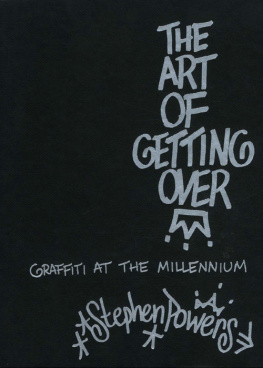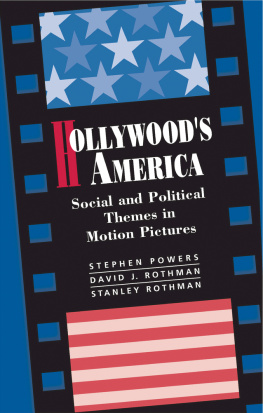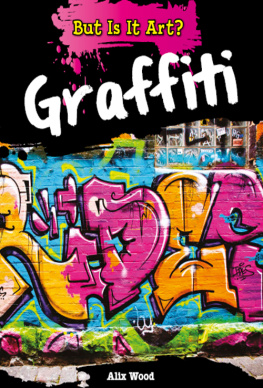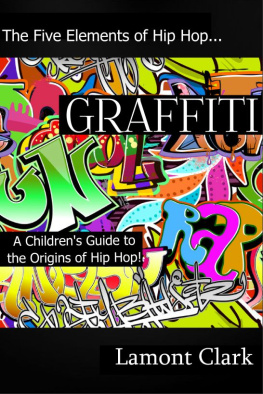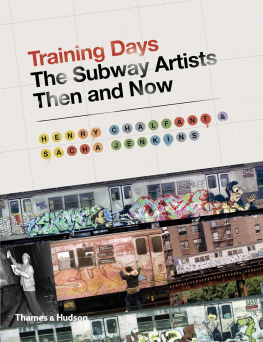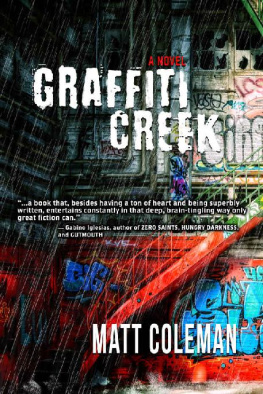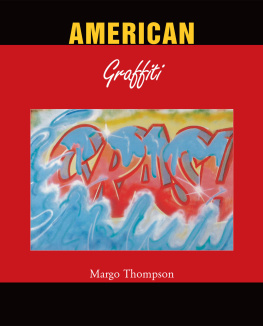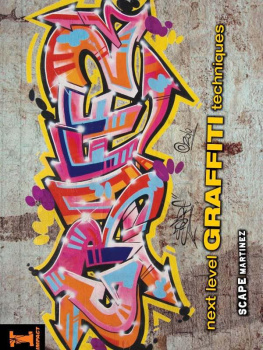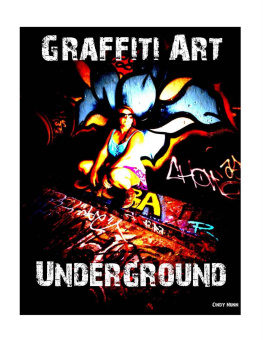THE ART OF GETTING OVER:
GRAFFITI AT THE MILLENNIUM
STEPHEN POWERS
ST. MARTINS PRESS
NEW YORK

The author and publisher have provided this e-book to you for your personal use only. You may not make this e-book publicly available in any way. Copyright infringement is against the law. If you believe the copy of this e-book you are reading infringes on the authors copyright, please notify the publisher at: us.macmillanusa.com/piracy.
THE ART OF GETTING OVER 1999 BY STEPHEN J. POWERS. ALL RIGHTS RESERVED. NO PART OF THIS BOOK MAY BE USED OR REPRODUCED IN ANY MANNER WHATSOEVER WITHOUT WRITTEN PERMISSION EXCEPT IN THE CASE OF BRIEF QUOTATIONS EMBODIED IN CRITICAL ARTICLES OR REVIEWS. FOR INFORMATION, ADDRESS ST. MARTINS PRESS, 175 FIFTH AVENUE, NEW YORK, N.Y. 10010.
DESIGN BY ARI FORMAN.
eISBN: 978-1-466-86640-9
10 9 8 7 6 5 4

INTRODUCTION
If youve ever walked down the street, seen a name, and wondered what that marking meant, Ill tell you: It means somebody is telling you a story about who they are and what they are prepared to do to make you aware of it. Every time a name is written, a story gets told. Its a short story: I was here. Who is telling it and where they are telling it will determine how the story ends. Some stories will be adventures, some tragedies, and some courtroom depositions. But every single one has a star, a stage, and an audience, and thats all a growing youth needs to have fun.
Graffiti is about thirty years old, give or take a year. Its impossible to pinpoint because, in spite of its detractors fury, spray paint is hardly a permanent medium. Thanks to a dedicated sun, most graffiti fades over time. What the sun misses, a vigilant brush gets, so graffiti lives on in only two ways; the photo and the story. Both of these methods, are, in their own way, imperfect. Thats what makes the story of this expression so difficult to tell, and so compelling to hear. Photos are typically snapped, developed, divided up, and traded with others. What remains is stored in a shoe box. It seems every writer has one, and they all have a complete disregard for organization. Theres something very fresh about that, though. Graffiti is about doing it, being it, and getting it. Proper documentation has, until recently, been the furthest thing from the writers minds. And ironically, the most dedicated archivists of the expression are not even writers. So true graffiti lives in the moment, and while every mark a writer makes will probably get buffed or fall into the hands of someone whos missing a lot of details, at least weve got the stories.
Stories are the most permanent medium for storing and sharing the graffiti experience. While photos are hidden and only brought out to show a few intimates, stories are readily exchanged, embroidered upon, and passed on again. The real story of graffiti is necessarily an oral history. Good stories go across the world in minutes and last forever. Its not just the writers, its the cops and the anti-grafftiti activists too. Everybody loves to tell you a good graffiti story. The story gets darker and more visible with each retelling and it cant be painted over.
No one person better illustrates this than KAP. He was a Philadelphia writer who constructed his own myth. He called himself the Bicentennial Kid, and in 1976 set out on a course to ensure his name would be remembered. He wrote on everything, but it was a print on the Liberty Bell two weeks before the big Fourth of July celebration that ensured his immortality. Mayor Rizzo personally offered to break his fingers, which, as any Philly writer will tell you, was a gold-medal moment. KAP died of leukemia in November of that year. But then hes still here, isnt he?
This book is for everyone with a good story. This book is for the ones that I didnt get to tell. This book is for the ones with no story of their own yet. I hope everyone gets heard, word.
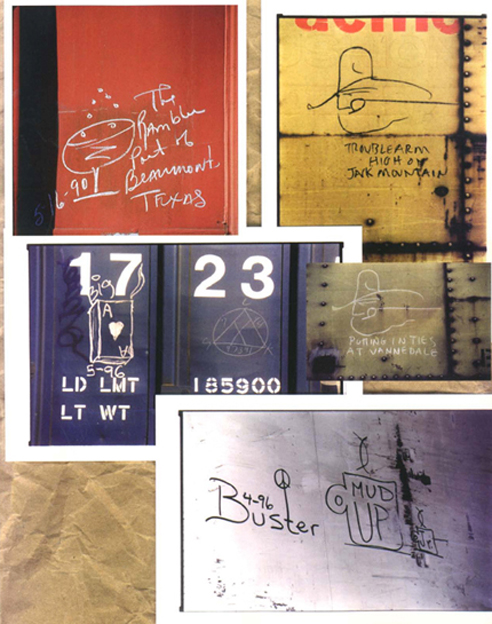


GETTING A FEW THINGS STRAIGHT
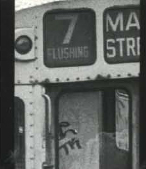
Freight Monikers look like the oldest form of modern graffiti, extending the history of an individual writing an alias in a unique style to the early part of this century. Of course those marks, like Kilroys, were made by adults, and incurred no real risk, but the marriage of name and picture on a train in a way that combined to make an icon is right on track with what was to come later. Cholo writing then left its first consistently stylized mark on youth in L.A. in the 1940s (possibly even earlier). The All-City Individual movement began when the spray-paint markings of Bobby Beck In 59 began to appear all over the Philadelphia highways. These three modes of markingFreight, Cholo, and wallsare still in effect, but its the third that keeps expanding in number of practitioners and influence in the surrounding culture. The first king of walls? Philly superstar Cornbread had props like bercop Frank Rizzo before the 60s were out. So what was the original motivation for the original king? Cornbread started to write to attract the attentions of a girl at his school named Cynthia. Love is the original motivation for everything. First the hallways, then her locker. Apparently this wasnt enough to get her attention, so he wrote along the route that her bus took, then he went into the bus barn and wrote all over every bus. Soon enough he got the girl and she got to compete with his magnificent obsessionwriting. She lost. In addition to his introduction of the crown (every king should have one) and the crew (Delta Phi Soul, a fraternity of our own) the Cornbread saga has plenty of angles that continue to influence the growth of the culture that surrounds graffiti today. There was and is a pop culture that celebrated the idea of a writer expressing himself, the media who reported on the fascination (and in doing so burnished the image of the outlaw artist), and finally a commodification of the writing, but not before the writers influence manifests itself in a younger writer who furthers the form. This is a three-point rotation that keeps the world of graffiti spinning in its orbit to this day. Cornbread had a movie based on his life (Cornbread, Earl, and Me, which, after Bread got a lawyer, became a movie about two kids playing basketball on the Southside of Chicago), there were headlines in the newspaper after there were rumors of his death (greatly exaggerated, natch), and a student whose stride would take him all the way to New York City. This student, Top Cat, told Cornbread that he couldnt compete in Philly and set off to find a block to call his own, on 126th Street in Manhattan. He left town with the next generation of script, a style Philly called Gangster Style, Chicago called Old English, and New York would call Broadway Elegant, and the style wars began. Style was born in Philly and took a Greyhound to Port Authority. Theres no doubt that it flourished in the fertile New York soil, but you can see in the Philly photos from 196971 a highly evolved print style that the New York scene didnt possess at the time.

